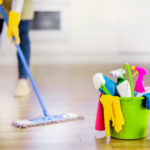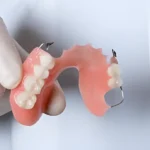Caring for an elderly relative might seem like a daunting prospect, but there are a few simple tips you can follow to make your home a safe space.
1: Non slip floors
Floors and stairs are one of the leading causes of falls. Much of the risk can be mitigated by removing trip hazards like throw rugs and adding traction to slippery surfaces. Elderly people often shuffle rather than fully lifting their feet, which makes it easier to trip or lose balance. Cover hardwood floors with carpets while ensuring that all current carpets are secure. If you must have rugs, purchase rug anchors to keep them in place.
2: Add a stairlift
Making the stairs safe should always rank high on an aging parents checklist. Installing a pair of railings (one on either side) goes some way to offset the risk, as does applying non-slip strips. These measures help, but nothing quite compares to the safety of a stairlift. A lift takes the stairs completely out of the equation. It’s safe, smooth, and convenient.
3: Go open plan
Open-plan houses are much safer for the elderly simply because there are fewer obstacles. Move things like tables and chairs out of the center of the room and push them to the sides instead. Walk through space and see if you bump into anything or encounter any obstacles. Keeping open thoroughfares is one of the easiest ways to prevent injury.
4: Replace doorknobs with levers
Another simple step, but doorknobs can be difficult for an elderly relative, especially if they’re suffering from arthritis. Simply pulling down on a lever is much easier than grappling with an unwieldy doorknob, giving them far more freedom around the home. Levers are cheap and easy to install in only a few minutes.
Check Also: medical alert watches
5: Put grab bars in the bathroom
The majority of falls happen in the bathroom, so this is another big area of concern. Grab bars (along with anti-slip mats on the floor) are essential. Placing bars on the bath and shower to give the relative something to hold onto as they get in/out can make all the difference. A shower seat is a good idea, too.
6: Install a help button
No matter your best intentions, problems can still occur. A help button is simply a pendant that an elderly person wears around their neck and presses if they get into difficulties. The help button goes directly through to the emergency services, ensuring that assistance is never far away. These are great for peace of mind and only require a small subscription fee.
7: Put common items in easy reach
This is an often overlooked part of making your home friendly for the elderly. Commonly used household items like pots and dishes should be placed so that the relative doesn’t have to reach for them.
8: Cover edges
If an elderly relative is suffering from poor coordination, you’ll find that they’re prone to bumping into things as they move. While that’s often harmless, it can be dangerous if they collide with a sharp edge. The corners of tables, countertops, and cupboards can be more jagged than you imagine. Fortunately, there are plenty of plastic bumpers available to cover edges and ensure safe transit.







